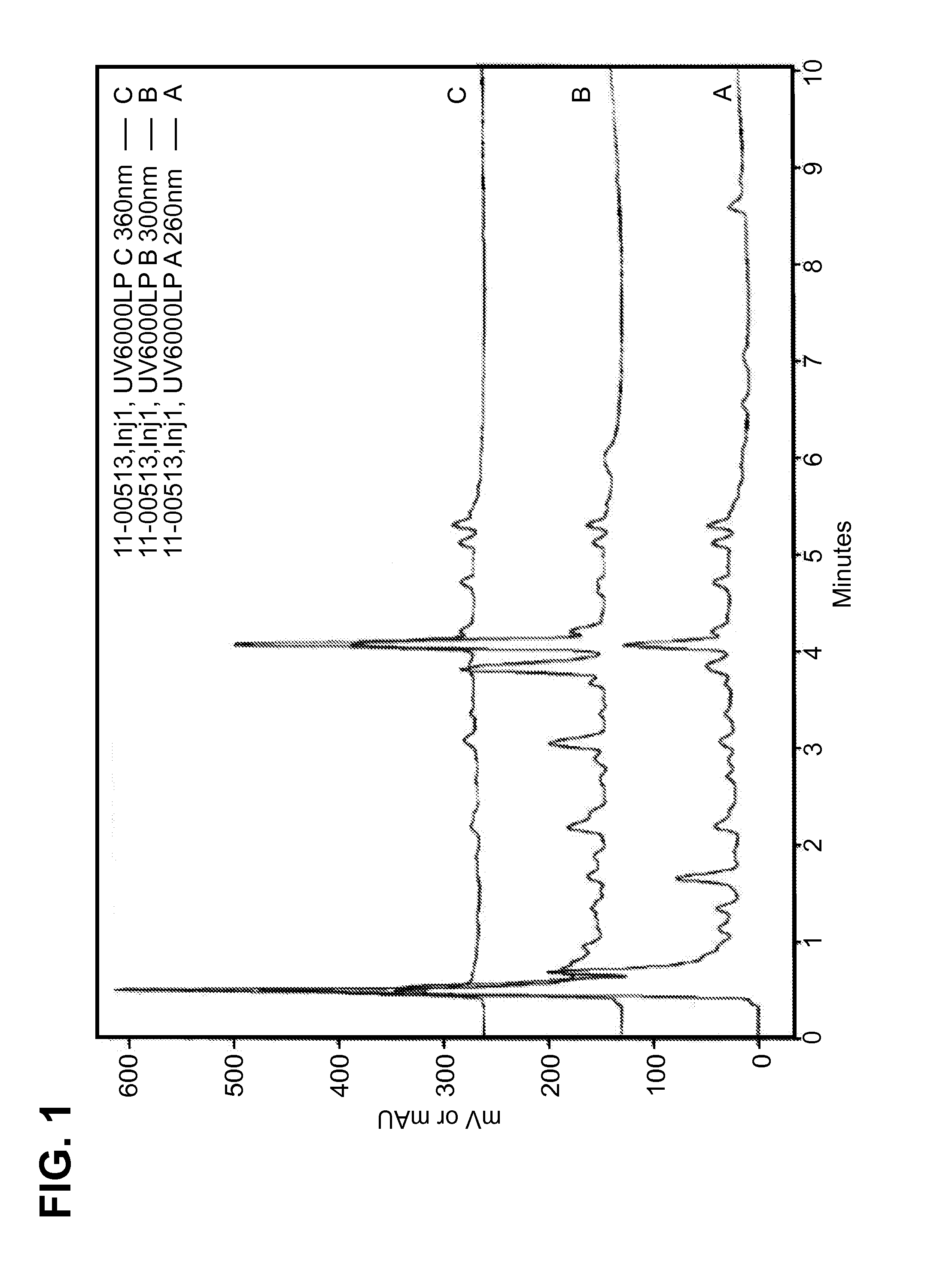Calotropis gigantea extracts and methods of use
- Summary
- Abstract
- Description
- Claims
- Application Information
AI Technical Summary
Benefits of technology
Problems solved by technology
Method used
Image
Examples
example 1
Preparation of Candidate Substance
[0134]Calotropis gigantea flower components were gathered and then chopped. The chopped flower components were then ground and a 50% ethanol solution was added to the chopped flower components. The solution was filtered and the filtrate vacuum evaporated to yield a concentrated extract of approximately 600 ml, which was then diluted with pure water. The diluted extract was vacuum evaporated, then again diluted with pure water. The diluted extract was left to stand at 4 C for 12 hours, then centrifuged and filtered. 3× extraction with hexane followed this filtration step, with the hexane layer and aqueous layers subsequently being separated and the aqueous layer being concentrated. Charcoal was added to the concentrated aqueous layer and the charcoal / aqueous layer mixture was then centrifuged and filtered. The filtered extract was then extracted 3× with water-saturated n-butanol, with the butanolic (upper) and aqueous layers subsequently separated. T...
example 2
HPLC Of Candidate Substance
[0136]Extracts were generally characterized by high performance liquid chromatography. A sample size of approximately 5 mg / mL was dispersed in 25 / 75 MeOH / H2O and sonicated. The characterization was performed on a Zorbax SBC-18 column (7.5 cm×4.6 mm, 3.5 um particle size) and detection was achieved using diode array UV absorbance, 260 nm 300 nm and 360 nm, with lines on FIG. 1 depicted in ascending order and 260 nm on bottom. Operating conditions were flow rate 1.5 ml / min; temperature, 40° C.; sample injection volume, 20 μL, and time of run, 19 minutes. The mobile phase gradient used was as follows. In one embodiment, the extracted composition of a compound, in substantial isolation, exhibits an HPLC profile substantially similar to that depicted herein in FIG. 1.
example 3
[0137]Melanin content assay was measured by assaying the soluble melanin extracted from B16F10 lines after exposing with plant fractions. B16F10 mouse melanoma cells were seeded into culture dishes at a density of 2.5×105 and cultured for 48 h. The medium was replaced with fresh medium containing various concentrations of plant extracts. The B16F10 were incubated for 48 hr. Then the cells were harvested and washed with ice-cold PBS (pH 7.4) 2 times. Melanin contents were measured by UV-visible spectrophotometer at 405 nm. Relative to B16F10 mouse melanoma cells treated with control (media), B16F10 mouse melanoma cells treated with a Calotropis gigantea candidate substance (aqueous extract) exhibited approximately 95% of the melanin content of cells incubated with control media (when Calotropis gigantea was at a final concentration of 50 ug / ml in the media.
PUM
 Login to View More
Login to View More Abstract
Description
Claims
Application Information
 Login to View More
Login to View More - R&D
- Intellectual Property
- Life Sciences
- Materials
- Tech Scout
- Unparalleled Data Quality
- Higher Quality Content
- 60% Fewer Hallucinations
Browse by: Latest US Patents, China's latest patents, Technical Efficacy Thesaurus, Application Domain, Technology Topic, Popular Technical Reports.
© 2025 PatSnap. All rights reserved.Legal|Privacy policy|Modern Slavery Act Transparency Statement|Sitemap|About US| Contact US: help@patsnap.com

